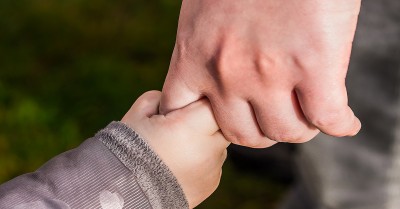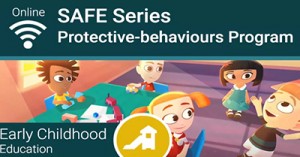The Child Safe Standards recommended by the Royal Commission provide a framework for making organisations safer for children. They have been accepted by the NSW government. Based on extensive research and consultation, the Standards provide tangible guidance for organisations to create cultures, adopt strategies and act to put the interests of children first, to keep them safe from harm.
The Child Safe Standards are not meant to be a set of rules or checkboxes that can be ‘ticked and flicked’ with no real change in work practices. Instead, they encourage organisations to think about their current practices and find areas where they can improve. The Standards prompts people to think about their unique work environment and their contribution to creating and maintaining cultures where children’s interests and rights are prioritised.
Standard 1 Child safety is embedded in organisational leadership, governance and culture
Having a leadership team that is committed to providing safe environments means children are less likely to be exposed to harm and abuse. A child safe culture is a set of values and practices that guide the attitudes and behaviour of all staff. Good leaders champion these values and embed them in organisational governance. Leadership that keeps children safe is demonstrated by personal behaviour, having child safe practices, putting children first, prioritising training and education, and having a culture of continuous improvement.
Documenting the Standard
- Child safe policy
- Organisational statement of commitment to child safety.
- Code of Conduct signed by all staff and steps taken to ensure that it has been understood.
- Risk management strategies.
- Complaint handling, information sharing and reporting policy.
- Awards, posters and other material promoting child safety.
- Meeting agendas and minutes show child safety is a standing agenda item
Standard 2 Children participate in decisions affecting them and are taken seriously
A child safe organisation values children and identifies opportunities for them to participate in decisions that affect them. Empowering children by supporting them to take part in discussions about their safety is a reliable indicator that your organisation is child safe.
Documenting the Standard
- Child safe policies promote children’s empowerment and participation.
- Risk management strategies identify practices that disempower children and describe how to respond to them.
- Posters and brochures give information about support services for them.
Standard 3 Families and communities are informed and involved
Parents or carers have primary responsibility for raising their children.3 Child safe organisations involve families and community members in decisions that affect the children in their care. Children feel more valued when this happens, and when organisations are more accountable for their child safe practices.
Documenting the Standard
- Child safe policies reflect the importance of family and community involvement, and describe ways this can take place.
- Complaint handling policies include procedures for keeping family and community members informed, in accordance with the law.
- Child safe information in various formats such as brochures, posters, websites and on social media.
- Surveys that gauge the effectiveness of family and community engagement.
Standard 4 Equity is upheld and diverse needs are taken into account
Children need to build relationships, skills and knowledge, and have access to resources that keep them safe. Organisations need to adapt to the diverse needs of children, so they have equal opportunities to feel welcome and participate in activities and programs.
Documenting the Standard
- Child safe policy describes how children should have their individual needs recognised and describe how the organisation considers its response to children with vulnerabilities.
- Risk management plan identifies factors that may increase the risk of abuse for children with vulnerabilities and describes how these should be managed.
- Diversity and inclusion plan.
- Records of events that demonstrate diversity and inclusion.
Standard 5 People working with children are suitable and supported
The WWCC is only one tool of many to support organisations in screening potential staff. Screening processes help prevent unsuitable people from being recruited and can discourage them from applying. Ongoing supervision encourages people to follow policies that can reduce the risk of harm to children. Robust human resource management practices ensure that all staff receive ongoing training to effectively perform their role
Documenting the Standard
- Employment advertising includes the organisation’s Statement of Commitment to Child Safety.
- Induction packages include Codes of Conduct, Child Safe Policies and Complaint Handling Policies.
- Job descriptions and duty statements set clear expectations about child safety and describe the organisation’s commitment to child safety.
- Child Safe Policy describes ways that recruitment occurs.
- Documentation that indicates Working With Children Checks have been verified.
- Records of staff interview results, reference checks and inductions.
- Performance development plans for staff.
- Supervision contracts that describe how staff performance will be managed
Standard 6 Processes to respond to complaints of child abuse (or other concerns) are child-focused.
Implementing a child focused complaint handling procedure means people know how to make a complaint and staff know what steps to take to respond. Children are safer when complaints are addressed quickly, thoroughly and transparently, and where the family and community are supported. When the complaint process is child focused, children feel more comfortable and empowered to make a complaint.
Documenting the Standard
- Child focused complaint handling policy and procedure that includes information on how to make a complaint, respond to a complaint, investigate a complaint, and provide support and assistance for those making a complaint.
- Code of Conduct that clearly describes appropriate and inappropriate behaviour.
- Disciplinary policy.
- Records of complaints made to the organisation, ranging from concerns to disclosures.
- Records of reports about child safety that have been made to government agencies, in keeping with legislative obligations.
- Accessible complaint handling information available online and in print, including in the form of a website, social media, brochures, fact sheets or posters.
- Records of complaint handling and Code of Conduct training
Standard 7 Staff are equipped with the knowledge, skills and awareness to keep children safe, through continual education and training
When an organisation has a culture of learning, staff are provided with ongoing education and training in how to keep children safe. Training also supports staff in understanding what abuse looks like, how the environment can enable or deter abuse and what behaviours indicate abuse may be occurring. Training gives staff confidence to respond to abuse if it is detected. It reinforces the importance of child safety and that it is everyone’s responsibility. Child safe training should extend from front-line staff to managers and boards of directors.
Documenting the Standard
- Child safe policy reflects staff training obligations and opportunities.
- Training plan that includes a schedule of upcoming learning opportunities.
- Training records.
- Educational materials describing indicators of abuse and what to do if it is identified.
- Educational materials discuss emerging issues relating to child safety.
Standard 8 Physical and online environments minimise the opportunity for abuse or other kinds of harm to occur.
Safe physical environments play a significant role in reducing opportunities for abuse to occur. Perpetrators exploit situations where they can be alone with children or use the online environment to extend their connection and influence.
Documenting the Standard
- Child safe policy identifies how the organisation will keep children safe in physical and online environments, with specific reference to higher-risk activities.
- Risk management plan identifies risks to child safety in physical and online environments, and how these will be managed.
- Code of Conduct sets clear behavioural expectations about adult interactions with children.
- A Statement of Commitment to Child Safety reflects children’s rights to privacy.
- Posters and brochures give information about online safety. • Training plans, logbooks and audits of physical environments.
Standard 9 Implementation of the Child Safe Standards is continuously reviewed and improve
Child Safe Standards are principle-based and are more effective if their implementation is continuously reviewed and improved. Being a child safe organisation is an evolving process that requires ongoing efforts to keep children safe.
Documenting the Standard
- Log books or version control showing when policies and procedures have been revised and updated.
- Documents (such as reports or board meeting papers and minutes) outline recommendations on how child safe practices can be improved, and they describe how these improvements have been implemented.
- Policies and procedures include a schedule for future reviews and updates.
Standard 10 Policies and procedures document how the organisation is child safe
Implemented effectively, child safe policies and procedures provide guidance and clarity to staff, volunteers, parents and children about how to prevent and respond to child safety issues. Without this clarity, individual staff can be left to make their own judgements about complex issues and scenarios – sometimes with poor consequences
Documenting the Standard
- Child safe policy that includes a Statement of Commitment to Child Safety
- Code of Conduct
- Risk management plan
- Complaint handling policy that includes reporting obligations
- Recruitment policy
- Social media policy
- WWCC policy
- Disciplinary policy
- Inclusivity plan supporting children with diverse needs.
The vast majority of Educators already place children first and are motivated to do what is best for them. Implementing the Standards should therefore not be an additional burden, but rather an effective way to embed child safety in the attitudes, behaviours and practices of those working at every level of an early childhood service.
The Child Safe Standards has been created by the NSW Office of the Children’s Guardian to help organisations create and maintain environments where children are safe from harm and abuse.
For more detailed information: Guide To Child Safe Standards







 Here is the list of the EYLF Learning Outcomes that you can use as a guide or reference for your documentation and planning. The EYLF
Here is the list of the EYLF Learning Outcomes that you can use as a guide or reference for your documentation and planning. The EYLF The EYLF is a guide which consists of Principles, Practices and 5 main Learning Outcomes along with each of their sub outcomes, based on identity,
The EYLF is a guide which consists of Principles, Practices and 5 main Learning Outcomes along with each of their sub outcomes, based on identity, This is a guide on How to Write a Learning Story. It provides information on What Is A Learning Story, Writing A Learning Story, Sample
This is a guide on How to Write a Learning Story. It provides information on What Is A Learning Story, Writing A Learning Story, Sample One of the most important types of documentation methods that educators needs to be familiar with are “observations”. Observations are crucial for all early childhood
One of the most important types of documentation methods that educators needs to be familiar with are “observations”. Observations are crucial for all early childhood To support children achieve learning outcomes from the EYLF Framework, the following list gives educators examples of how to promote children's learning in each individual
To support children achieve learning outcomes from the EYLF Framework, the following list gives educators examples of how to promote children's learning in each individual Reflective practice is learning from everyday situations and issues and concerns that arise which form part of our daily routine while working in an early
Reflective practice is learning from everyday situations and issues and concerns that arise which form part of our daily routine while working in an early Within Australia, Programming and Planning is reflected and supported by the Early Years Learning Framework. Educators within early childhood settings, use the EYLF to guide
Within Australia, Programming and Planning is reflected and supported by the Early Years Learning Framework. Educators within early childhood settings, use the EYLF to guide When observing children, it's important that we use a range of different observation methods from running records, learning stories to photographs and work samples. Using
When observing children, it's important that we use a range of different observation methods from running records, learning stories to photographs and work samples. Using This is a guide for educators on what to observe under each sub learning outcome from the EYLF Framework, when a child is engaged in
This is a guide for educators on what to observe under each sub learning outcome from the EYLF Framework, when a child is engaged in The Early Years Learning Framework describes the curriculum as “all the interactions, experiences, activities, routines and events, planned and unplanned, that occur in an environment
The Early Years Learning Framework describes the curriculum as “all the interactions, experiences, activities, routines and events, planned and unplanned, that occur in an environment


